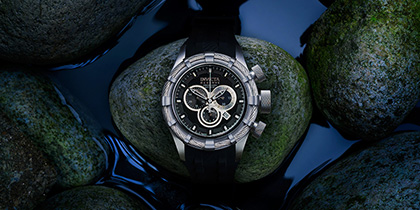
The difference between automatic and manual movements in luxury watches lies in how the timekeeping mechanism is powered and operated. Let's explore each type in detail:
- Manual Movements:
Manual movements, also known as manual-winding movements or hand-wound movements, are the traditional and oldest form of watch movements. In a manual movement watch, the wearer manually winds the mainspring of the watch by turning the crown. This winding action stores potential energy in the mainspring, which slowly unwinds over time, powering the movement of the watch.
When the mainspring is fully wound, it provides the watch with a power reserve, indicating how long the watch can run without rewinding. Typically, manual-winding watches have power reserves ranging from 30 to 60 hours. Once the power reserve is depleted, the watch stops running, and the wearer needs to manually wind it again to restart the movement.
Manual movements are admired by watch enthusiasts for several reasons. They offer a tactile and engaging experience, as winding the watch becomes a ritualistic act that connects the wearer to the watch's mechanical heart. Additionally, manual-winding movements often have thinner profiles compared to automatic movements, allowing for sleeker and more elegant watch designs.
- Automatic Movements:
Automatic movements, also known as self-winding movements, are a more modern development in watchmaking. They are designed to eliminate the need for manual winding by utilizing the natural motion of the wearer's wrist to power the watch.
Inside an automatic watch, a semicircular rotor, often adorned with the brand's logo or decorative elements, is connected to the movement's winding mechanism. As the wearer moves their wrist throughout the day, the rotor swings back and forth, rotating freely on its pivot. This motion transfers energy to the mainspring, which winds and stores the energy to power the watch's movement.
Automatic movements are equipped with a slipping clutch mechanism that prevents overwinding and protects the watch's delicate components. They also feature a power reserve indicator, indicating the amount of stored energy in the mainspring. If an automatic watch is not worn for an extended period, it will eventually stop running as the power reserve depletes. To restart the watch, the wearer can manually wind it or simply wear it, allowing the natural motion of the wrist to wind the watch again.
In conclusion, the main difference between automatic and manual movements in luxury watches lies in how they are powered. Manual movements require the wearer to manually wind the watch using the crown, while automatic movements utilize the natural motion of the wearer's wrist to wind the watch through a rotor. Both types of movements offer unique experiences and have their own charm, appealing to different watch enthusiasts based on their preferences and appreciation for mechanical craftsmanship.




